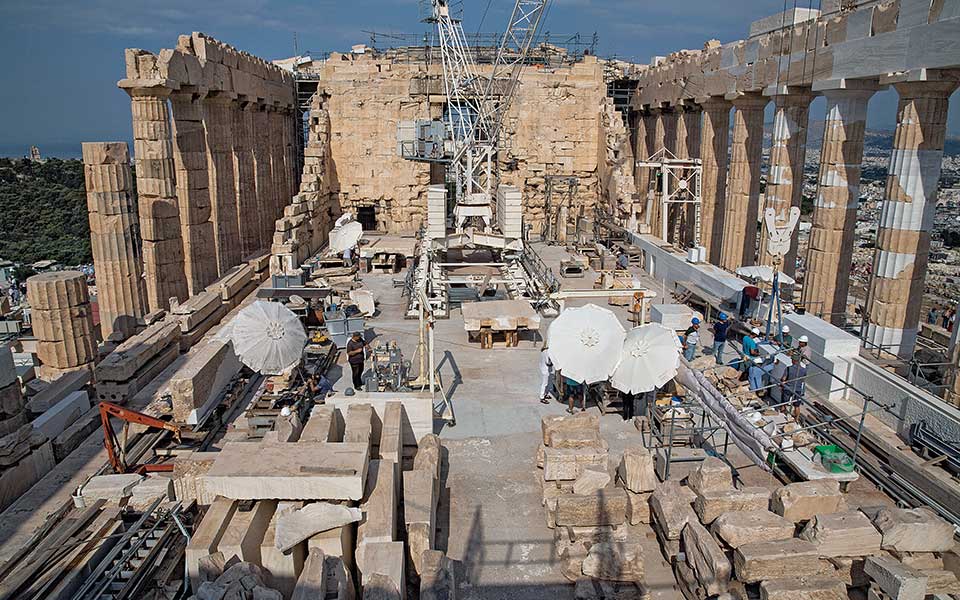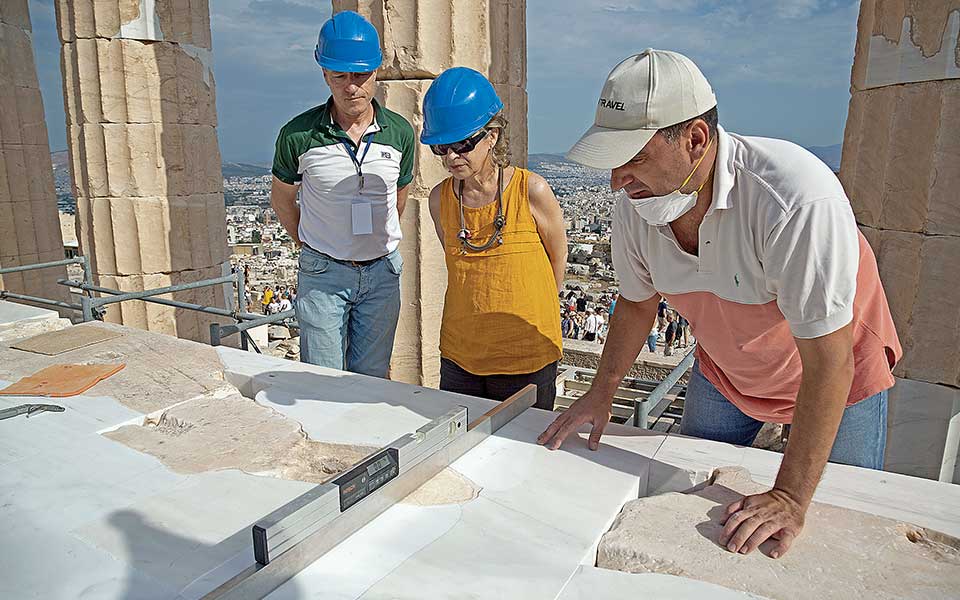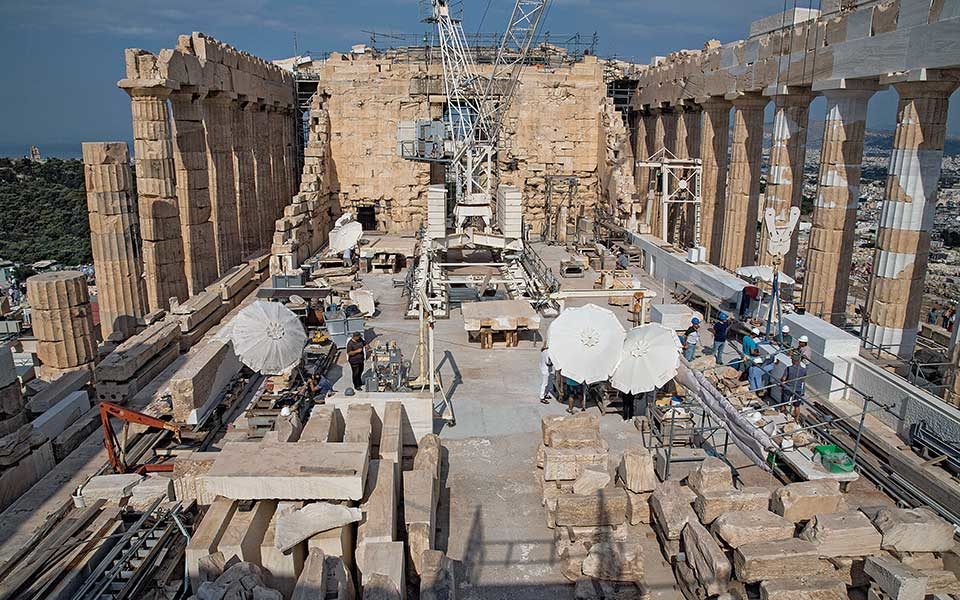
Greece-Is has published an article detailing the restoration work the Parthenon will undergo, including an interview with the woman who has been entrusted with conserving one of the ancient world’s greatest wonders.
The magnificent temple on the Acropolis of Athens, known as the Parthenon, was built between 447 and 438 BC in the Age of Pericles, and it was dedicated to the city’s patron deity Athena.
"This monumental building is filled with symbolism evoking power, struggle and victory," the article notes.
Architect Vasiliki Eleftheriou, is the director of the Acropolis Restoration Service (YSMA), the special department within the Ministry of Culture and Sports, established in 1999 for the purpose of organising and implementing the conservation and restoration works to be carried out on the Acropolis.

Here is the article written by Iota Sykka that was published in Greece-Is
We’re standing on the Acropolis, having just left the Propylaia behind us. Immediately, our gaze is drawn to the greatest achievement of ancient Greek architecture – the Parthenon. Everyone pauses, admiring the temple’s proportions, its harmony of lines, unsurpassed for two and a half thousand years. Most visitors capture this moment with a photograph; I pause to recall the words of Panos Valavanis,archaeology professor, who told me years ago that this monumental building is filled with symbolism evoking power, struggle and victory. Through it, he noted, passed the state ideology of ancient Athens.
Construction of the Parthenon took place between 447 BC and 438 BC, using marble from the quarries of Mt Penteli. It comprises 16,500 marble members of different sizes. About 600 skilled laborers and 150 marble workers were involved in the original transport of this material to the Acropolis. Among them was probably Socrates. As a young man, he had worked as a stonemason, like his father, before abandoning this occupation “for the sake of education,” as Lucian wrote.
Today, the area is again a construction site, and again it is full of workers. Inside the monument, dwarfed by the temple’s imposing columns, they look like colorful specks from afar. Among them, a small, lively female figure can be made out. A closer look reveals her to be architect Vasiliki Eleftheriou, director of the Acropolis Restoration Service (YSMA), the special department within the Ministry of Culture and Sports, established in 1999 for the purpose of organizing and implementing the conservation and restoration works to be carried out on the Acropolis. Since 1975, the Committee for the Conservation of the Acropolis Monuments (ESMA), a multidisciplinary committee of academics and governmental officials, has been responsible for the scientific work on the archaeological site.
As with everyone on the team, the excitement and passion she has for the work she’s doing shows on her face, despite the glare of the fierce sun. Now that the restorations of the Erechtheion, Propylaia and Temple of Athena Nike have been completed, YSMA has focused in recent years on the Parthenon and Acropolis walls projects. Eleftheriou notes that the outline, which is still being followed today, for interventions on the Parthenon was first established in 1983 by architect Manolis Korres, current ESMA president.
In the coolness of her Plaka office, on quiet Polygnotou, near the Ancient Agora, we begin our conversation by referring to the “very important” meeting of the Central Archaeological Council (KAS) in early May. After a lengthy discussion, new proposals for the reconstruction of the north wall of the Parthenon’s cella were approved. This, Eleftheriou says, was a historic moment. A cella is the main interior room of an ancient Greek temple, in which the cult statue of the god or goddess was sheltered. In the Parthenon, the cella held the chryselephantine statue of Athena Parthenos, a work by Pheidias. The goddess’ clothes were crafted from gold, while the exposed parts of her body were ivory. Today, the cella walls represent an amazing restoration challenge. A total of 360 ancient stones, many of them with new marble attachments, will be reinstalled, along with 90 completely new marble members. “It was indeed a significant meeting, as decisions reached there will affect how the Parthenon appears in the future,” she tells us.
*Read the article in full here: Greece-is

